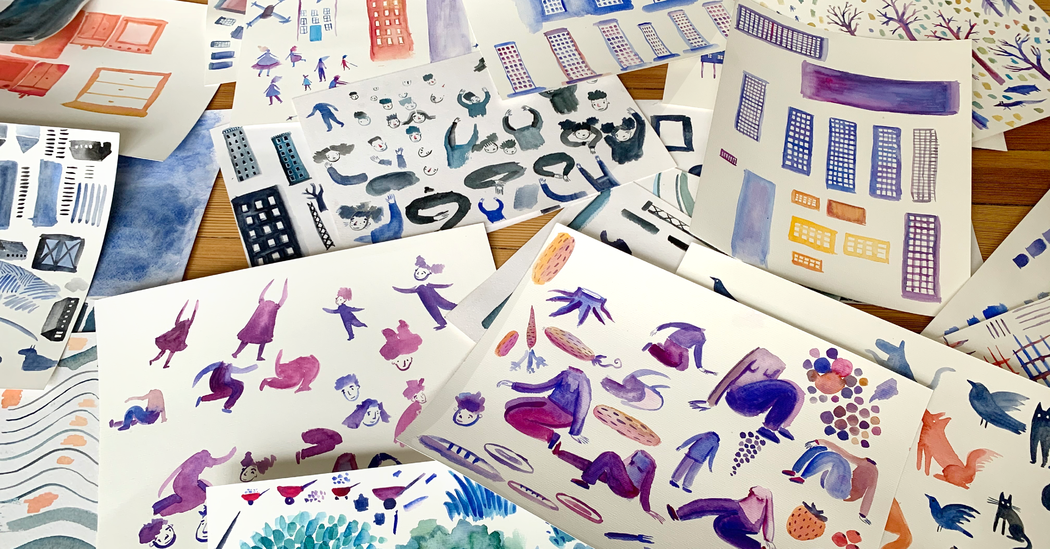
Times Insider explains who we are and what we do, and delivers behind-the-scenes insights into how our journalism comes together.
Climate change can be an unsettling subject for anyone, but it can be downright frightening for children. To explain the topic to young people, The New York Times’s Climate desk published a guide, “Bad Future, Better Future,” which includes ways they can help the environment.
To make the subject a little more accessible, Yuliya Parshina-Kottas, a visual journalist on the Graphics desk, created hand-painted illustrations using a type of watercolor called gouache. In an interview, she discussed the inspiration and intent behind the images. Her lightly edited answers are below.
How did this story come together?
I worked on a heavily illustrated piece that showed kids returning to school with masks and all of the ways that the classrooms were going to change. The visual style was different, and Hannah Fairfield, the editor of the Climate desk, reached out, saying she was interested in doing something similar to explain climate change to kids. We started kicking around some ideas, trying to figure out what would work well in this format. We landed on this idea: What would the future look like if we didn’t do anything and we continued on the path we’re taking now? And what would it look like if we made all these changes? We basically ended up with a kids’ book.
How did you try to make the art accessible to children?
We definitely wanted to keep the visuals warmer and friendlier and more playful, and let it be a fantasy world, while still illustrating serious concepts.
Being a news organization, we wanted to stay true to the reality of things. Working with watercolors gave us the freedom to make fun illustrations. We worked with our amazing reporter Julia Rosen, who made the language inviting to the age group we’re targeting, which is somewhere between ages 8 to 14. Claire O’Neill, the visual editor on the Climate Desk, shaped the visual and the written content, and Aliza Aufrichtig, a digital designer, built a unique interactive scrolling framework that made this format possible.
Are you an illustrator in addition to being a designer?
I’m actually more of a 3-D animator, and I’ve been involved with a lot of emerging technologies over the years. But in my spare time I’m more of a traditional animator and illustrator — that’s what I do for fun when the kids go to sleep. I haven’t been able to do that for my New York Times work until now.
I understand that to create these illustrations you painted each body part — head, arms, legs — then scanned them and pieced them all together.
While I love illustrating, personally, I’m not the strongest illustrator. I actually find it challenging to draw a figure and envision how they will all go together. I paint on watercolor paper, using gouache. Then I scan it and build it in Photoshop. I’ll cut the head out, I’ll cut the body out and I’ll put them together. These are just basically little Frankenstein people.
Has this been something of a passion project for you?
A lot of my personal work is in fairy-tale land. I am obsessed with folklore, so a lot of the things I draw are related to folklore, or to women’s issues. It’s kind of in a different world. This is definitely a work of passion. The number of hours that I put into this goes beyond anything I’ve worked on. This has been kind of building in the background while I was working on more serious Covid-related pieces. While climate change is frightening, this is a visually happy place to be.

Average Rating